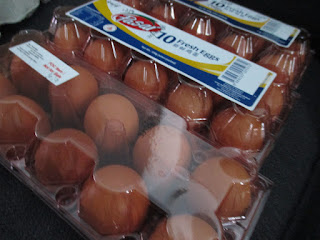It has been a long time since I shared a technical analysis (TA) here in ASSI.
I used to do a lot more TA when I was trading more actively but I have not been trading as much for quite a while now.
Alamak. You don't believe me?
Why? AK is lazy? OK, you win.
I too lazy to defend myself. ;p
Anyway, since I haven't done this for a while, I am probably rusty.
 |
| (RIGHT CLICK AND CHOOSE "OPEN IMAGE IN NEW TAB".) |
Looking at the chart, it should be obvious that the trend is down.
However, what is more noteworthy is that the downtrend is a strong one.
There is no sign of any positive divergence as the MACD has formed a lower low and so has the CMF.
Money is still flowing out of the stock and chances of a trend reversal at this point are slim.
Today is a white candle day but it is a short white candle with an upper wick of equal length which suggests that Mr. Market wasn't a very enthusiastic buyer.
Although with all the selling pressure, some people say ComfortDelgro is oversold, the MFI shows that the stock is yet to be oversold.
Yes, the bleak picture could get worse.
Are you vested at much higher prices and don't have balls of steel? OK, stop reading now.
Still reading?
OK, you have been warned.
Short sellers are probably having a field day here and any half-hearted recovery in share price would probably be seen as an opportunity to short sell.
The strong downtrend could see the support provided by the 138.2% Fibo ($1.97) broken. It was merely punctured but recovered last week.
We could see the 150% Fibo at $1.90 tested then. If that goes, the 161.8% Fibo at $1.83 is next.
These are golden ratios and are theoretically stronger support levels.
If these supports were to break, more blood will flow on the streets.
OK. What if this does not happen?
Alamak, remember that TA is about probability, not certainty.
If it does not happen, then, treat this as a horror story lor. ;p
Related post:
Incomplete analysis of ComfortDelgro








































